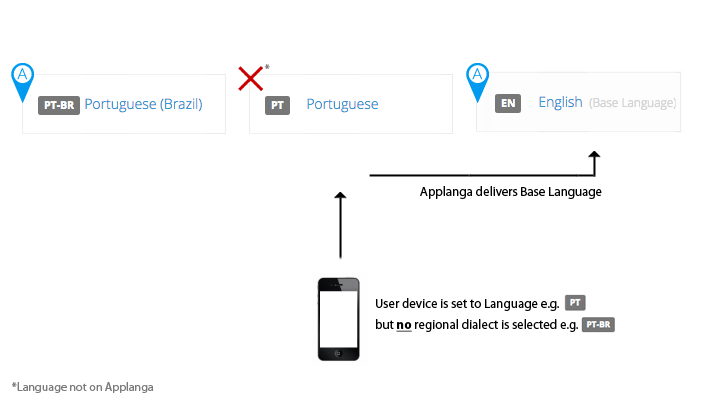

 If you only create and translate the regional dialect (eg. PT-BR) and not the original
language (eg. PT),
only users with their phone set to the region will get the translation. Everybody else that
is requesting
the original language or another regional dialect will get the Base Language localization.
If you only create and translate the regional dialect (eg. PT-BR) and not the original
language (eg. PT),
only users with their phone set to the region will get the translation. Everybody else that
is requesting
the original language or another regional dialect will get the Base Language localization.